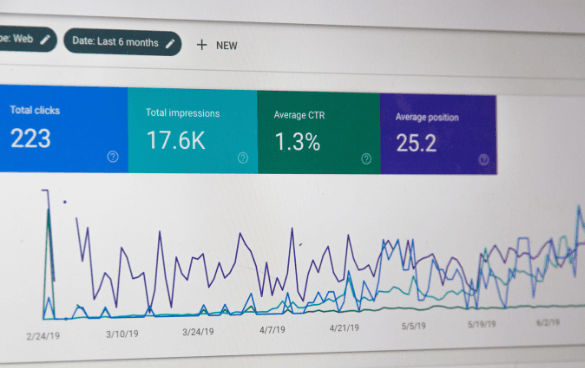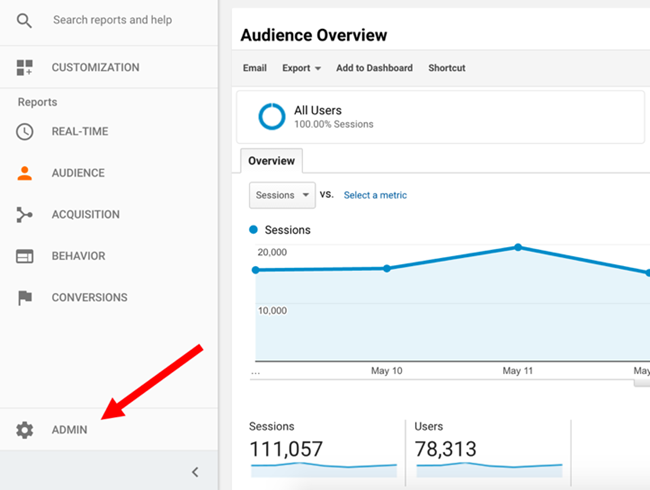Advanced Techniques for Remarketing In Google Analytics
Wiki Article
Remarketing in Google Analytics: Transforming Visitor Information Into Sales
The ability to specifically target audiences based on their habits and choices opens up doors to a world of possibilities, propelling companies towards lasting growth and profitability. Via a precise analysis of visitor actions and a tailored remarketing strategy, companies can navigate the digital landscape with precision and finesse, deciphering the real potential of their online presence.
Advantages of Remarketing in Google Analytics
Remarketing in Google Analytics uses companies the possibility to reconnect with website site visitors that have shown interest in their solutions or products, thereby enhancing brand exposure and conversions. By leveraging this powerful tool, businesses can stay top-of-mind with possible consumers that have currently involved with their web site. One of the vital advantages of remarketing is the capability to target particular audiences based on their behavior on the web site, permitting for personalized messaging and tailored marketing campaign.In addition, remarketing in Google Analytics can aid companies enhance their conversion prices by re-engaging with site visitors that might not have actually purchased or completed a wanted action on the web site throughout their preliminary see. This targeted method can bring about greater conversion prices and eventually drive more sales. Additionally, remarketing can additionally help organizations develop brand commitment and trust fund by preserving consistent communication with potential customers throughout their buying journey.
Establishing up Remarketing Campaigns
When initiating remarketing projects in Google Analytics, organizations need to carefully plan and apply tactical targeting strategies to properly reach their desired target market. The primary step in setting up remarketing projects is to define clear objectives. Whether the goal is to increase website conversions, advertise particular items, or elevate brand understanding, having a distinct objective will lead the whole campaign strategy.Next, organizations require to develop audience listings based upon specific requirements such as site site visitors, customers who abandoned their purchasing carts, or those that engaged with certain content. These checklists enable targeted messaging tailored to every section of the target market, boosting the possibilities of conversion.

Finally, businesses need to establish conversion monitoring to measure the success of their remarketing projects accurately. By evaluating the performance information, companies can enhance their campaigns for much better outcomes and greater ROI.
Leveraging Target Market Segmentation for Remarketing
Making use of target market segmentation is a crucial strategy for boosting the performance of remarketing projects in Google Analytics (What Is “Remarketing” In Google Analytics?). By dividing your internet site visitors into distinctive teams based upon their behavior, demographics, or rate of interests, you can customize your remarketing initiatives to target these specific sections with relevant ads. Audience division enables you to produce more customized and targeted campaigns, boosting the possibilities of re-engaging visitors and driving conversionsSegmenting your target market enables you to provide tailored messaging that resonates with each team's needs and preferences. As an example, you can develop separate remarketing checklists for customers who abandoned their shopping carts, checked out specific product pages, or downloaded a specific resource. By recognizing the various inspirations and interests of these sectors, you can craft compelling ad creatives that are most likely to capture their focus and prompt them to review your website.
Moreover, target market segmentation likewise aids you optimize your advertisement invest by concentrating on high-value sections that are more probable to transform - What Is “Remarketing” In Google Analytics?. By examining the performance of each section, you can allocate your budget better and make the most of the return on your remarketing financial investment
Analyzing Remarketing Efficiency Metrics
Metrics such as click-through rate (CTR), conversion price, price per procurement (CERTIFIED PUBLIC ACCOUNTANT), and return on advertisement invest (ROAS) offer useful understandings right into the efficiency of your remarketing initiatives. CPA helps determine the cost of obtaining a customer with your remarketing project, while ROAS examines the earnings created for each dollar spent on advertising and marketing. By assessing these metrics, you can recognize locations for enhancement, enhance your campaigns, and assign budget a lot more properly to optimize the ROI of your remarketing approaches in Google Analytics.
Ideal Practices for Remarketing Success
Building on the foundation of analyzing remarketing performance metrics, implementing ideal practices is vital to accomplishing success in your remarketing ventures. Additionally, make sure that your remarketing ads are visually enticing and have compelling telephone calls to action.In addition, frequency topping is necessary to prevent ad tiredness. Pestering individuals with the same ad consistently can result in aggravation and lowered performance. Examining different ad messages, positionings, and layouts is also important. A/B screening enables you to recognize which strategies produce the very best outcomes and optimize your campaigns appropriately. Last but not least, monitor your campaigns routinely, examine the information, and make data-driven decisions to continually improve your remarketing efforts for maximum effect.
Final Thought
In final thought, remarketing in Google Analytics offers businesses the chance to take advantage of site visitor data to raise sales and directory drive conversions. By using audience click resources segmentation, evaluating performance metrics, and applying ideal methods, companies can customize their remarketing initiatives to target high-value sections successfully. Through engaging advertisement creatives and conversion tracking, businesses can build brand name loyalty and count on, inevitably making best use of the influence of their advertising and marketing techniques.Through a meticulous evaluation of site visitor activities and a tailored remarketing method, services can browse the digital landscape with precision and finesse, deciphering the true potential of their on-line existence.
One of the essential benefits of remarketing is the capability to target particular target markets based on their actions on the web site, allowing for customized messaging and customized advertising projects.
Additionally, remarketing can additionally help services construct brand loyalty and depend on by maintaining constant interaction with possible customers throughout their buying journey.
Metrics such as click-through price (CTR), conversion rate, expense per purchase (CERTIFIED PUBLIC ACCOUNTANT), and return on advertisement invest (ROAS) provide useful understandings right into the effectiveness of your remarketing efforts. By examining these metrics, you can identify areas for improvement, maximize your projects, and allocate budget much more efficiently to optimize the ROI of your remarketing approaches check it out in Google Analytics.
Report this wiki page